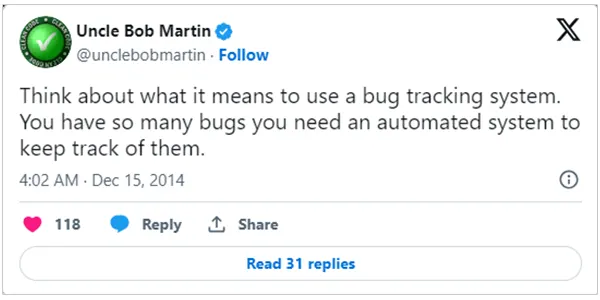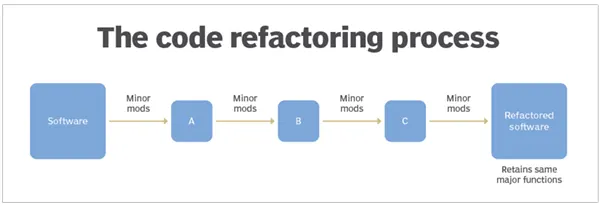What are the Best Practices for Preventing Reintroduction of Bugs into Your Codebase?
Are you frustrated with those constant, annoying bugs during your software development cycle? This is not new to developers, bug is the most hated word of programmers. It is not possible to develop software with zero bugs, but we can try to reduce them.
Those unnoticed minor bugs are sometimes responsible to cause troubles for both developers and users. To reduce the frequency of bugs in your codebase, you have to understand the nature and cause of these and find strategies to tackle them. You can use browser testing tools and bug testing tools for better results.
After consulting with various testers and developers, we have created a list of best practices that can help you prevent the reintroduction of bugs into your codebase.
5 Best Practices for Preventing Bugs Into Your Codebase
Fixing bugs is challenging, costly, and time-consuming. If you are constantly getting bugs in your code, then fixing them can consume a lot of human and physical resources.
As said by a Dutch philosopher “Prevention is better than cure”, reducing the count of bugs is always better than fixing them later. You can follow the below list of 5 best practices for preventing bugs.
Use Behavior-Driven Development (BDD):
The process of development and designing an application around behavior users expect during their interaction during their interaction with an application is known as Behaviour-driven development.
The goal of BDD is to make the process of development simple by using a common domain-specific language. This helps in converting natural language sentences into executable texts. BDD increases the visibility and encourages the use of a Domain Specific Language (DSL) that fosters collaboration among the team members and reducing miscommunication.
Usually, behaviour-driven development projects commence with discussions among developers, managers, and customers. They together discuss every bits and pieces to form the overall picture of the application. The implementation of this method usually begins with the widest level of expertise and progresses to the bottom.
This flexibility and transparency in discussing and reviewing test cases reduces bugs and is proven to be the best ways of preventing potential bugs.
Transparent Communication:
Every process of development needs good communication. Transparent communication among the developers, testers, and research team who are collecting the data on requirements is very necessary.
It is seen that when team members are informed about the requirements and specifications of the application, it increases the likelihood of solving issues earlier and quicker than ever. Professional developers always plan how and when they will solve the bugs.
Some programmers start procrastinating to solve bugs, and they start shifting the dates for later. In this scenario, all team members and the team lead should communicate and decide a time to fix the bugs immediately.
On that note, frequent yet transparent communication with each other should be practices to discuss occurring bugs and fix them as soon as they appear.
Use Bug-Trackers:
Bugs are defects or errors in software that causes them to malfunction. Sometimes, It’s hard to track them, but bug-tracking tools have made it easier.
These are necessary tools for any software development. It is because, they are powered to identify bugs within no time and increase productivity.
Bug trackers constantly give notification alerts to your team about the changes and modifications of bugs.

With bug tracker tools, you can prioritize which bug you are willing to solve first and which one to save for later. Moreover, there is a feature called automated testing tools, you can use them to eliminate manual efforts and boost your productivity.
Bug trackers do come with some exceptional features. For example, they provide in-built chat features. This feature supports developers in communicating or conveying details about the existing bugs. When you are choosing a bug-tracking tool, you should keep in mind factors like budget, project size, number of team members, etc.
By keeping all these factors in mind, you can get your hands on a perfect tool that not only handle the bug volume but also ensures effective communication.
Do You Know?
Developers often talk about bugs in their daily development cycle. Do you know where the word bug came from, and who used it first? A moth got stuck in a Harvard Mark II computer in 1947. This resulted in a malfunction within the system.
Then, the technician who resolved the issue named this as the “first actual case of a bug being found”. From there, this word got popular.

Code Refactoring:

Refactoring is simply a process of restructuring code, resulting in improving code without changing its functionalities. Overall, it increases the quality of the code and reduces potential bugs.
Refactoring makes your code more readable, and understandable and reduces complexities so that this code can be used again.
The purpose behind refactoring is to improve code by making them:
- Efficient by addressing dependencies and complexities.
- Cleaner, so that they are easier to read and understand.
- Easier for developers to locate as well as fix bugs and vulnerabilities in the code.
Not only this, it even improves application’s performance sometimes. As an outcome, the application will run fast with even fewer resources.
To lesser your research, here are some of the best methods of code rendering:
- Extract Method
- Rename Variables
- Remove Duplicate Code
- Split Conditional Statements
Use Version Control:

Version control, also known as source control, is a practice that tracks and manages all the changes to software code. It even allows reverting, merging, or branching the code as needed. As development environments have accelerated, this is considered an important skill for developers. This is helpful in both code writing and fixing bugs by keeping codes organized, avoiding conflicts, and facilitating collaboration.
With it, you can track the history of your code and view different versions in minutes. It is an essential tool for debugging, you can see how the bug was created by viewing the changes in the code.
Meanwhile, it is used to tag and document the releases so that you can keep an eye on which version of your code is deployed and tested.
Tip 💡:
Adopt a branching strategy to manage features, bug fixes, and releases. This is practiced to ensure that changes are introduced in a controlled manner.
Are you planning to use a version-controlling tool for your upcoming projects? If so, then you are advised to keep a few factors in mind i.e. the size and requirements of your project. Following are some of the best version control tools:
- Git
- Subversion
- Mercurial
Final Note:
Appearance of bugs is usual in software development. However, it is necessary to reduce them. When your development cycle has fewer bugs, it will increase your productivity and save time and resources.
In this article, we discussed the best practices for the prevention of bugs in your code base. If you find this post helpful, share it with your fellow programmers, so that they also can use these tips to reduce bugs and increase productivity.
